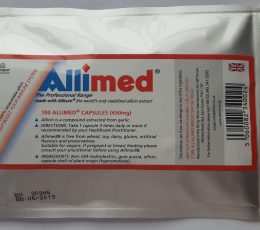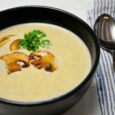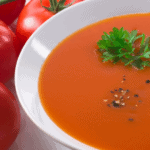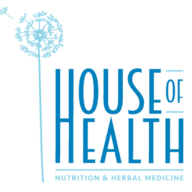What is so Good About Garlic?
Simple question, you’d might think, but garlic is actually quite a complex wee herb (or is it a spice? No, vegetable?)
Garlic has been highly valued throughout the ages as both a vegetable and a spice and has possibly been cultivated for longer than many other plants. Sanskrit records document it’s use medicinally ~5,000 years ago, it was prized by the Egyptian pharaohs, who gave daily rations to fortify the pyramid-building slaves.
It is a hardy plant belonging to the Liliaceae family, which also includes onions, leeks, chives, spring onions and shallots. While the use of garlic shoots is common in some cuisines, the bulb is the most frequently used part. Each bulb has 8 – 20 individual cloves enclosed in a thin white parchment-like skin.
How does Garlic Work?
Allicin is the principal active ingredient in garlic, but it’s not present in the fresh, whole cloves. Instead, is produced in the clove in response to damage. This is the result of conversion of alliin (found in fresh garlic) by the enzyme, alliinase. Alliinase is readily deactivated by heating – thus cooked garlic has reduced biological or therapeutic effects, as the alliin cannot be converted to allicin.
It’s the Allicin that works garlic’s magic.
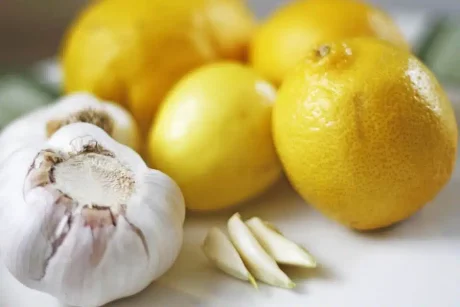
What are the Health Benefits of Garlic?
It has antibacterial and antifungal properties
Throughout history, garlic has been regarded as an easily accessible, safe, and well-trusted remedy. Sometimes referred to as ‘Russian penicillin’ due to its consistent antibacterial properties, attributed to the compound allicin.
Garlic was used during epidemics in the past, such as cholera and tuberculosis. It was also used as an antiseptic in World War I, applied to wounds to cleanse and support healing, as well given by mouth to treat the dysentery that ran rife through the soldiers in the trenches.
Allicin in its pure form has demonstrated antibacterial activity against a wide range of Gram-negative and Gram-positive bacteria, including multidrug-resistant enterotoxigenic strains of Escherichia coli
antifungal activity, particularly against Candida albicans
Garlic has antiparasitic activity
including against some major human intestinal protozoan parasites such as Entamoeba histolytica and Giardia lamblia.
Garlic has antiviral properties
Garlic itself has a long history of use as an infection fighter against viral infection. Warts, for example, may respond to garlic oil or a crushed raw garlic clove.
Pure allicin has demonstrated antiviral activity, including against coronavirus and the SARS form of it. Recent investigations suggest that allicin may inhibit protease activity in the host and thus may prevent virus penetration and replication.
In cell studies, allicin was demonstrated to reduce the replication of SARS-CoV-2. A recent review of the scientific literature suggests allicin may also have value as an inhalation therapy as a supportive treatment of respiratory infection associated with SARS-CoV-2, as well as the bacterial infections that often develop consequent to the virus, which are significant causes of mortality in hospitalised patients.
Garlic is nutritious
It is highly nutritious, but low in calories.
100g of garlic (about 14 medium-large sized cloves) provides:
- 98 calories
- 7.9g protein
- 0.6g fat
- 16.3g carbohydrates
- 5.5g fibre
Tip: Garlic-lovers love the taste, but not the lingering evidence on the breath. Solution: chew parsley – to freshen the breath.
By weight, garlic is an excellent source of vitamin B6 (pyridoxine). It is also a very good source of manganese, and selenium. It also contains vitamin C, though this is diminishes with storage and is largely destroyed in the cooking process. Several other minerals, including sulphur, phosphorous, calcium, potassium, iron and copper are also present in garlic.
Garlic is good for your heart and may reduce heart attack risk
Garlic has demonstrated metabolic effects, including improving glucose absorption, and diminishing cholesterol levels. It may help to lower blood pressure.
Is garlic safe to consume?
Garlic is generally safe and well tolerated by most people, and allergies are rare. If you are taking it for cholesterol, get a blood test after three months.
There are some medicines that are not advised to be taken along with high-dose garlic. Consult your health practitioner for advice.
High doses (particularly of raw garlic) may cause burning in the mouth or throat.
Some people may experience gas, indigestion, or even diarrhoea from consuming garlic,. This is generally a sign that their gut microbiome is out of balance.
How much garlic should I take?
The recommended daily amount for therapeutic use varies from half to one whole clove per day, or about 3000-6000mcg of allicin.
While some people may experience gas, indigestion, or even diarrhoea from consuming garlic, this is generally a sign that their gut microbiome is out of balance.

